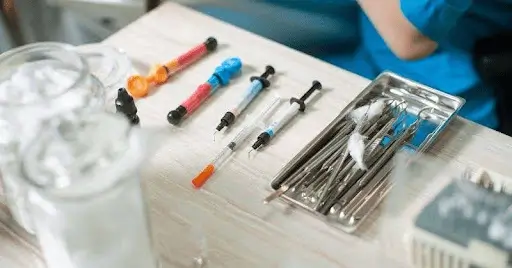Dental Consumables in Clinical Practice: Streamlining Efficiency and Sterility
In private dental practice, operational efficiency and clinical integrity are inextricably tied to material reliability. While much attention is given to high-end equipment and digital systems, the daily functioning of a dental clinic depends just as much on a category of materials often taken for granted: dental consumables.

These items—used routinely in diagnostics, prevention, restorative procedures, and infection control—represent a critical layer of every treatment workflow. Understanding their role, and managing their procurement and usage effectively, is essential for maintaining both clinical standards and business sustainability.
Defining Dental Consumables in the Operatory
The term dental consumables refers to materials that are used once or over a limited number of procedures and then discarded or replaced. They include a wide array of items such as:
- Restorative materials (composite resins, etchants, bonding agents)
- Local anesthetics and delivery devices
- Impression materials
- Matrix systems and wedges
- Infection control supplies (gloves, barriers, sterilization wraps)
- Preventive materials like fluoride varnishes and sealants
These materials are not simply supporting tools; they are integral to patient safety, procedural accuracy, and practice compliance. Without reliable access to high-quality consumables, even the most skilled practitioner cannot meet expected clinical outcomes.
Integration into Daily Clinical Flow
In a typical dental practice, consumables are encountered from the first patient of the day to the last. Anesthetic cartridges, disinfectant wipes, retraction cords, and curing tips are just a few examples of single-use or limited-use items that must be available at every station.
Their presence affects:
- Chairside workflow: Staff need predictable access to materials that perform consistently to avoid delays and repeat procedures.
- Treatment outcomes: Materials such as adhesives and composites directly influence the longevity and success of restorations.
- Patient perception: The visible use of single-use barriers or fresh sterilization pouches contributes to patient trust and perceived professionalism.
For clinicians managing their own practices, this makes inventory planning and supplier reliability a matter of both clinical performance and patient experience.
Strategic Procurement and Standardization
The fragmented sourcing of consumables—ordering from multiple vendors, relying on promotional samples, or inconsistent brand usage—can lead to inefficiencies and unpredictable clinical results. Many practice owners are shifting toward standardized procurement models to bring consistency and control into the operatory.
A key part of this strategy involves working with suppliers that offer a focused and dependable selection of dental consumables. Centralized sourcing helps:
- Ensure product consistency across procedures
- Reduce time spent managing orders and backorders
- Enable better tracking of expiration dates and batch numbers
- Improve staff training through material familiarity
Consistency in materials also supports standard protocols and reduces the margin for operator error.
Infection Control: A Core Responsibility
Among the most mission-critical consumables are those related to infection prevention. Regulatory expectations surrounding sterilization and cross-contamination control continue to evolve, particularly in light of increased public health scrutiny.
Practices are expected to maintain rigorous use of:
- Surface barriers
- Chair covers
- Autoclave indicator strips
- Disposable PPE (gloves, masks, gowns)
- Disinfection agents
Proper usage is not just a matter of patient safety; it’s directly tied to compliance with CDC and OSHA standards. Failure to meet those requirements can result in citations, reputational damage, and even practice closure in severe cases.
Materials and Predictable Outcomes
No material decision is neutral. The adhesive selected for composite placement, for instance, affects not only immediate bond strength but long-term marginal integrity. Similarly, the dimensional stability of an impression material can impact lab outcomes, remake rates, and ultimately patient satisfaction.
Dentists must routinely balance:
- Handling properties: Working time, viscosity, film thickness
- Compatibility: With curing lights, other adhesives, or impression trays
- Manufacturer support: Availability of safety data sheets, lot tracking, and regulatory compliance
Regular staff calibration and procedural reviews can ensure materials are being used as intended and that outcomes remain consistent.
Inventory Management in Independent Practice
Solo and small-group practices often lack a dedicated inventory manager, making streamlined ordering systems and clear usage protocols even more important. Practices that review usage data monthly—identifying frequently used items, loss points, or waste—can adjust their supply plans accordingly.
Integrating barcode systems, digital inventory tools, or automated reordering platforms may seem like a large operational shift, but they contribute meaningfully to efficiency and cost control over time. Dentists who manage their own practices benefit from reduced last-minute orders, fewer procedural interruptions, and less reliance on temporary substitutions.
Looking Ahead: Evolving Expectations and Smarter Systems
As dentistry continues its shift toward minimally invasive techniques, digital workflows, and enhanced infection control, expectations for consumables will rise accordingly. Materials will be expected to integrate into broader systems—whether CAD/CAM-compatible impression materials or resin systems designed for rapid polymerization.
For independent practitioners, this means staying informed not only about clinical techniques, but also about the materials that make those techniques possible.
Conclusion
The consistent, informed use of dental consumables is more than a background function in dental practice—it’s a cornerstone of modern clinical care. From infection control to restorative reliability, these materials play a daily, indispensable role.
By centralizing procurement, standardizing usage, and staying aligned with clinical objectives, dentists can improve outcomes, reduce overhead inefficiencies, and reinforce their commitment to high standards. The more intentional a practice is in managing its consumables, the more resilient and responsive it becomes in delivering care. You can visit showbizztoday.com for more trending posts.
